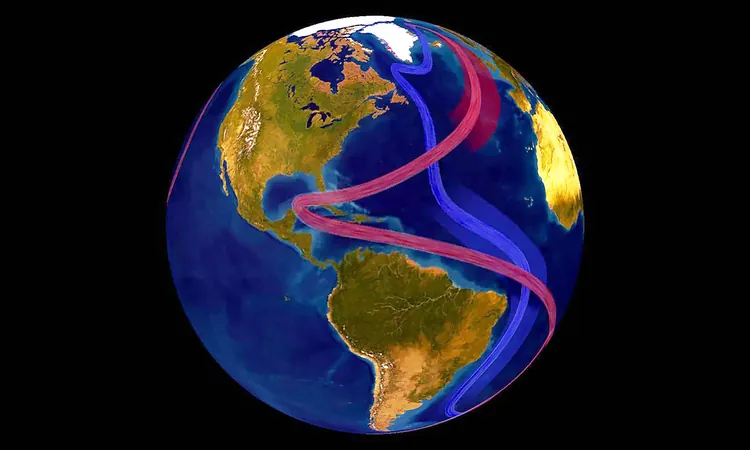
Is the Collapse of Earth's Ocean Circulation Imminent? Here's What You Need to Know!
2024-11-27
Author: Jacques
Understanding Ocean Currents and the AMOC
At the heart of this ocean conveyor belt is the Atlantic Meridional Overturning Circulation (AMOC). It operates like a massive engine that powers ocean currents, moving warm water from the tropics to the North Atlantic, where it cools, sinks, and flows back southward. This circulation is essential for maintaining a temperate climate in regions like Western Europe, which enjoys milder winters due to this process.
However, cutting-edge research published in Nature Geoscience underscores a concerning trend: the AMOC is currently weaker than it has been in the last millennium, primarily because of rising global temperatures attributed to climate change. In fact, researchers warn that it could weaken by a staggering 30% by 2040—two decades earlier than previous estimates.
Why You Should Care About Ocean Circulation
The implications of a weakening AMOC are dire. A slowdown in this oceanic current could lead to significantly colder winters in Europe and altered rainfall patterns that affect agriculture, ecosystems, and the lives of millions. Imagine harsher winters in places like Britain, which could start to resemble the frigid conditions found in parts of Canada at the same latitude.
Researchers highlight that this is not a distant problem; it is happening right now. As the Arctic warms nearly four times faster than the global average, the Greenland ice sheet and other glaciers are rapidly melting, releasing vast amounts of fresh water into the ocean. This influx disrupts the natural balance, preventing denser, salty water from sinking as it should, thereby undermining the Gulf Stream—the very current responsible for Europe's temperate climate.
The Ripple Effects of Change
The interconnectedness of ocean systems means that changes in one region can have far-reaching consequences. For example, as the North Atlantic becomes less effective at transferring heat due to a weakened current, the surface water temperatures drop, creating “warming holes,” while the South Atlantic begins storing more heat. These shifts can lead to extreme weather across both hemispheres, affecting both agricultural yields and biodiversity.
Recent models predict that the consequences of a weakened AMOC could materialize quickly: changes in oceanic circulation patterns are expected to be felt in less than 20 years. If the current rate of ice melt continues and additional meltwater is taken into account, we may see even more rapid declines in ocean circulation.
What Can We Do?
The urgency of action cannot be overstated. As the climate crisis escalates, it becomes increasingly critical to reduce greenhouse gas emissions. The effects of this accelerated melting and circulation slowdown present a stark warning: we do not have time to waste. The changes we are witnessing in our climate have the potential to disrupt lives globally, from more severe droughts to increased flooding.
Every action counts in this race against time. Awareness, advocacy, and decisive measures to cut emissions are essential for preserving our planet's delicate climate balance. The future of our weather patterns, agricultural stability, and biodiversity hangs in the balance, making immediate action more vital than ever.
Stay informed and engaged; the fate of our planet depends on it.









 Brasil (PT)
Brasil (PT)
 Canada (EN)
Canada (EN)
 Chile (ES)
Chile (ES)
 España (ES)
España (ES)
 France (FR)
France (FR)
 Hong Kong (EN)
Hong Kong (EN)
 Italia (IT)
Italia (IT)
 日本 (JA)
日本 (JA)
 Magyarország (HU)
Magyarország (HU)
 Norge (NO)
Norge (NO)
 Polska (PL)
Polska (PL)
 Schweiz (DE)
Schweiz (DE)
 Singapore (EN)
Singapore (EN)
 Sverige (SV)
Sverige (SV)
 Suomi (FI)
Suomi (FI)
 Türkiye (TR)
Türkiye (TR)